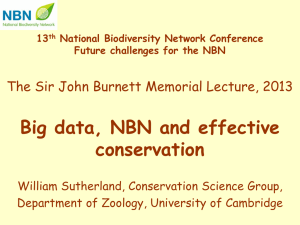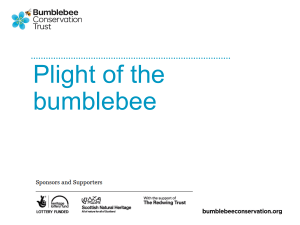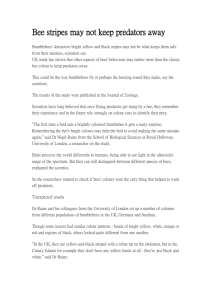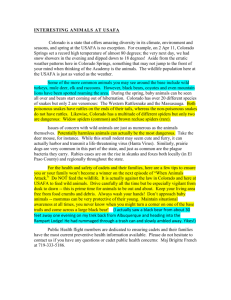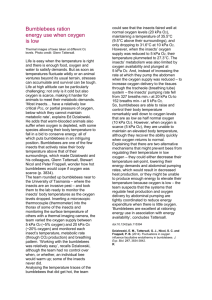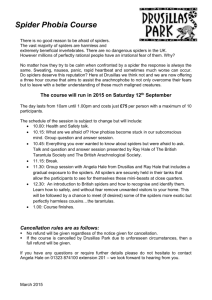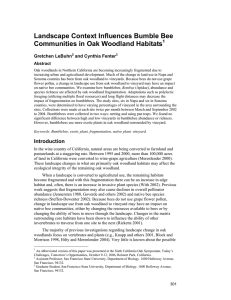Week 14
advertisement
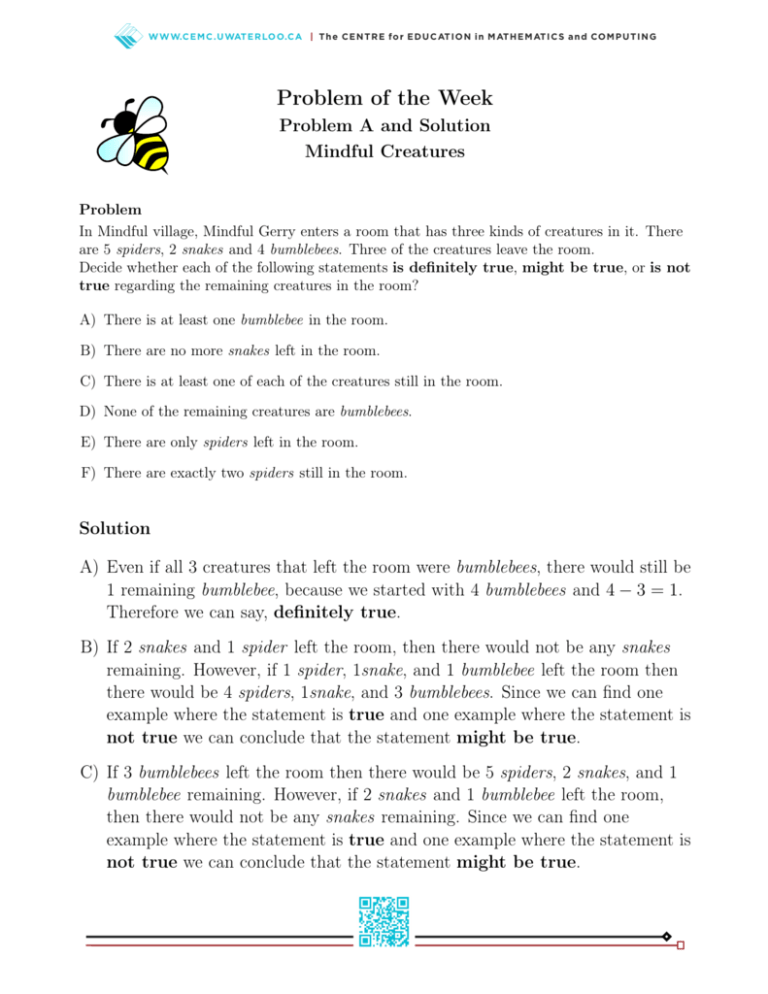
WWW.C E M C .U WAT E R LO O.C A | T h e C E N T R E fo r E D U C AT I O N i n M AT H E M AT I C S a n d CO M P U T I N G Problem of the Week Problem A and Solution Mindful Creatures Problem In Mindful village, Mindful Gerry enters a room that has three kinds of creatures in it. There are 5 spiders, 2 snakes and 4 bumblebees. Three of the creatures leave the room. Decide whether each of the following statements is definitely true, might be true, or is not true regarding the remaining creatures in the room? A) There is at least one bumblebee in the room. B) There are no more snakes left in the room. C) There is at least one of each of the creatures still in the room. D) None of the remaining creatures are bumblebees. E) There are only spiders left in the room. F) There are exactly two spiders still in the room. Solution A) Even if all 3 creatures that left the room were bumblebees, there would still be 1 remaining bumblebee, because we started with 4 bumblebees and 4 − 3 = 1. Therefore we can say, definitely true. B) If 2 snakes and 1 spider left the room, then there would not be any snakes remaining. However, if 1 spider, 1snake, and 1 bumblebee left the room then there would be 4 spiders, 1snake, and 3 bumblebees. Since we can find one example where the statement is true and one example where the statement is not true we can conclude that the statement might be true. C) If 3 bumblebees left the room then there would be 5 spiders, 2 snakes, and 1 bumblebee remaining. However, if 2 snakes and 1 bumblebee left the room, then there would not be any snakes remaining. Since we can find one example where the statement is true and one example where the statement is not true we can conclude that the statement might be true. WWW.C E M C .U WAT E R LO O.C A | T h e C E N T R E fo r E D U C AT I O N i n M AT H E M AT I C S a n d CO M P U T I N G D) If all 3 creatures that left the room were bumblebees there would still be 1 bumblebee remaining in the room. Therefore we can say, not true. E) If both snakes were to leave, that would allow for 1 more creature to leave with the snakes. That means that only 1 of the 4 bumblebees would have left the room with 3 bumblebees remaining. Therefore we can say, not true. F) If 3 spiders left the room, then there would be 2 spiders remaining. However, if 3 bumblebees left the room then there would be 5 spiders remaining. Since we can find one example where the statement is true and one example where the statement is not true we can conclude that the statement might be true. WWW.C E M C .U WAT E R LO O.C A | T h e C E N T R E fo r E D U C AT I O N i n M AT H E M AT I C S a n d CO M P U T I N G Teacher’s Notes This problem touches on an area of Mathematics known as Boolean logic. Logic is an essential part of Mathematics and Computer Science. Boolean logic is a subarea of mathematics where the outcomes of logical statements are one of two values: true or false. This problem does not exclusively deal in Boolean logic, since the statements in this case can be resolved to a third outcome: "might be true". Boolean logic was first introduced by a British mathematician named George Boole in 1847. This was almost 100 years before the first electronic computer was built, and yet Boolean logic is an essential part of the hardware and software that we use today. Despite having only two values to manipulate, you can write very complex Boolean statements. Just as there are mathematical operators such as +, −, ×, and ÷ that you can use to combine numbers, there are Boolean operators such as and, or, and not that you can use to combine the values true and false. The simplest operation is not. It follows this rule: not(true) = false not(false) = true Examining statement A and statement D from the original problem, we notice that they are logically opposite statements. Assuming the outcomes of the statements are either true or false, we could write the following Boolean expression: outcome of A = not(outcome of D) So by following the rules of Boolean logic, once we have determined that the outcome of A is true, we can immediately determine that the statement outcome of D is false.

